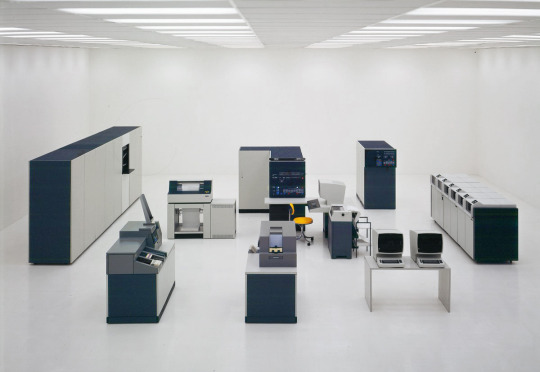#IBM system/370
Explore tagged Tumblr posts
Text
start them young

373 notes
·
View notes
Photo

IBM System/370
147 notes
·
View notes
Text

332 notes
·
View notes
Text



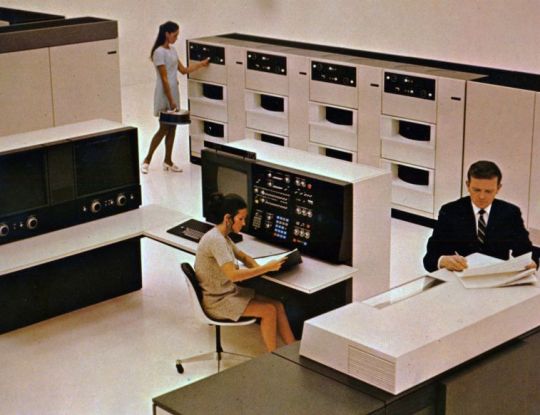


IBM System/360 & System/370 mainframes
#ibm#ibm system 360#ibm system 370#mainframes#computing#computers#mainframe computers#1960s#1970s#history
1 note
·
View note
Text
Cancelled Missions/Station: Manned Orbital Research Laboratory (MORL)

This was a study initiated in 1962 for space stations designs using the Gemini Spacecraft and later on the Apollo CSM. Boeing and Douglas received Phase I contracts in June 1964.


MORL/S-IVB Concept
"A 5 metric ton 'dry' space station, launched by Saturn IB, with Gemini or Apollo being used for crew rotation. The 6.5 meter diameter and 12.6 meter long station included a docking adapter, hangar section, airlock, and a dual-place centrifuge. Douglas was selected by NASA LaRC for further Phase 2 and 3 studies in 1963 to 1966. Although MORL was NASA's 'baseline station' during this period, it was dropped by the late 1960's in preference to the more capable station that would become Skylab.



Different docking concepts studied.
The Manned Orbital Research Laboratory was the brainchild of Carl M Houson and Allen C. Gilbert, two engineers at Douglas. In 1963 they proposed a Mini Space Station using existing hardware, to be launched by 1965. A Titan II or Atlas would be launched with a payload of control system, docking adapter and hangar module. The visiting crew would use the payload to transform the empty fuel tank of the last stage of the rocket into pressurized habitat (a so-called 'wet' space station). Provisions were available for 4 astronauts for a 100 day stay. Crew members would arrive two at a time aboard Gemini spacecraft. Equipment included a two-place centrifuge for the astronauts to readapt to gravity before their return to earth.

An early MORL concert. Artwork by Gordon Phillips.


In June 1964 Boeing and Douglas received Phase I contracts for further refinement of MORL station designs. The recommended concept was now for a 13.5 metric ton 'dry' space station, launched by Saturn IB, with Gemini or Apollo being used for crew rotation. The 6.5 meter diameter and 12.6 meter long station included a docking adapter, Hangar section, airlock, and a dual-place centrifuge.

"Medium-sized orbiting lab is this Manned Orbital Research Laboratory (MORL) developed for NASA's Langley Lab by Douglas Missiles & Spacecraft Division. The lab which weighs about 35,000 pounds, could maintain 3 to 6 men in orbit for a year.
Orbiting Stations: Stopovers to Space Travel by Irwin Stambler, G.P. Putnam's Sons, 1965."
Douglas was selected by NASA LaRC for further Phase 2 and 3 studies in 1963 to 1966. The major system elements of the baseline that emerged included:
A 660-cm-diameter laboratory launched by the Saturn IB into a 370-km orbit inclined at 28.72 degrees to the equator
A Saturn IB launched Apollo logistics vehicle, consisting of a modified Apollo command module, a service pack for rendezvous and re-entry propulsion, and a multi-mission module for cargo, experiments, laboratory facility modification, or a spacecraft excursion propulsion system.
Supporting ground systems.
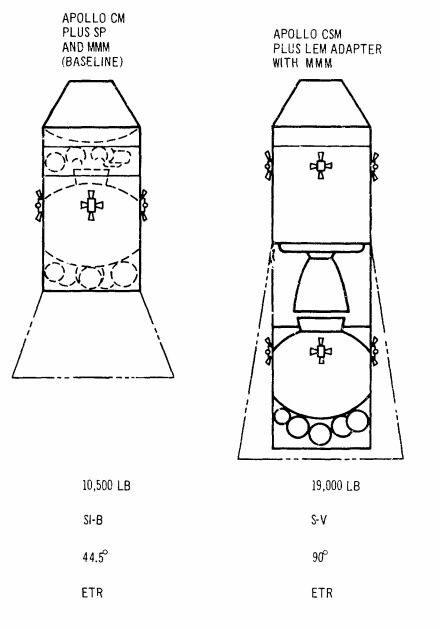

MORL Phase IIb examined the utilization of the MORL for space research in the 1970s. Subcontractors included:
Eclipse-Pioneer Division of Bendix, stabilization and control
Federal Systems Division of IBM, communications, data management, and ground support systems
Hamilton Standard Division of the United Aircraft Corporation, environmental control/life support
Stanford Research Institute, priority analysis of space- related objectives
Bissett-Berman, oceanography
Marine Advisors, oceanography
Aero Services, cartography and photogrammetry
Marquardt, orientation propulsion
TRW, main engine propulsion.
The original MORL program envisioned one or two Saturn IB and three Titan II launches. Crew would be 6 to 9 Astronauts. After each Gemini docked to the MORL at the nose of the adapter, the crew would shut down the Gemini systems, put the spacecraft into hibernation, and transfer by EVA to the MORL airlock. The Gemini would then be moved by a small manipulator to side of the station to clear docking adapter for arrival of the next crew."

"Docking was to have 3 ports, all Nose Dock config, with spacecraft modifications totaling +405 lbs over the baseline Gemini spacecraft (structure beef-up, dock provisions, added retro-rockets, batteries, a data link for rendezvous, temp. control equip. for long-term, unoccupied Gemini storage on-orbit and removal of R&D instruments)."
"Later concepts including docking a Saturn-IB launched space telescope to MORL. At 4 meter diameter and 15 meter long, this would be the same size as the later Hubble Space Telescope. The crew would have to make EVA's to recover the film from the camera.
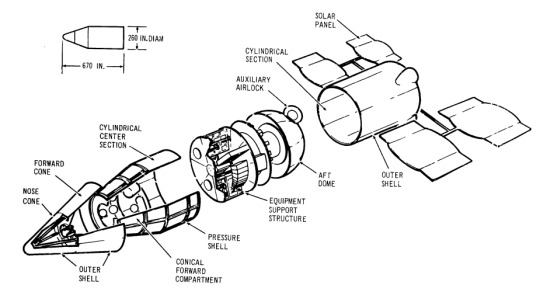
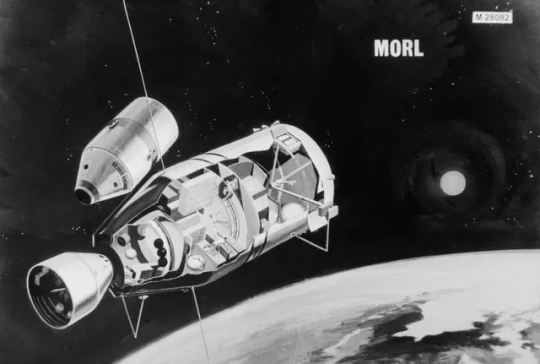
In 1965 Robert Sohn, head of the Technical Requirements Staff, TRW Space Technology Laboratories, proposed a detailed plan for early manned flight to Mars using MORL. The enlarged MORL-derived mission module would house six to eight men and be hurled on a Mars flyby by a single Saturn MLV-V-1 launch. MORL-derived Mars mission modules cropped up in other Douglas Mars studies until superseded by the 10-m diameter Planetary Mission Module in 1969.

MORL/Space Telescope
Why was MORL never launched ?
NASA had a need for a Space Station and MORL was little, easy and cheap. But NASA had more ambitious plans, embodied in the Apollo Applications Orbital Workshop (later called Skylab)."
-information from astronautix.com: link
source, source, source
NARA: 6375661, S66-17592
Posted on Flickr by Numbers Station: link
#Manned Orbital Research Laboratory#MORL#Space Station#Gemini#Gemini Program#Project Gemini#Apollo CSM Block II#Apollo Program#Saturn IB#Saturn I#S-IV#S-IVB#Apollo Applications Program#Cancelled#Study#1962#June#1965#my post
80 notes
·
View notes
Text
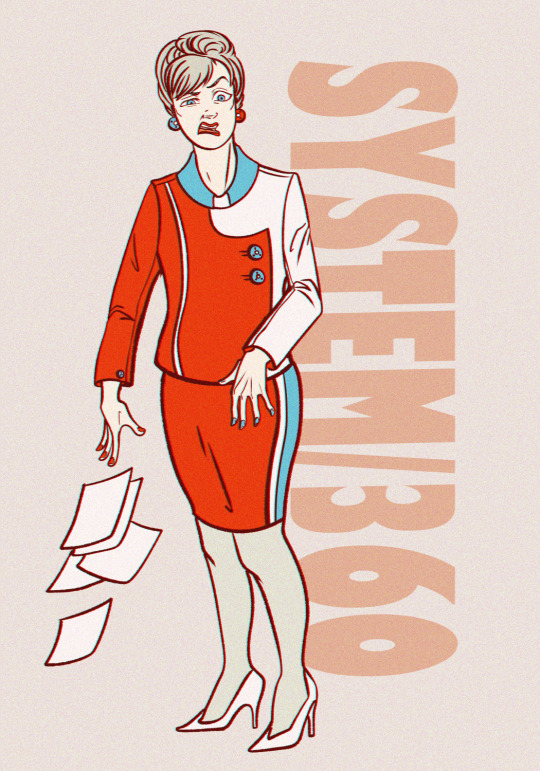
An ANCIENT drawing of IBM System / 360. She's more or less the leader of the IBM crew, and her and 370 each have a team of 5+ computers at their side.
19 notes
·
View notes
Text
O Instituto de Energia de Moscou (MPEI) e os Computadores da Série SM: Pioneirismo na Engenharia e Computação na União Soviética"

O Instituto de Energia de Moscou (MPEI) e os computadores da série SM emergiram como pilares fundamentais da autossuficiência tecnológica soviética durante a Guerra Fria. Enquanto o Ocidente investia em marcas como IBM e Cray, a União Soviética desenvolvia suas próprias soluções para competir na corrida pela supremacia tecnológica. Este artigo analisa como o MPEI e os mainframes SM impulsionaram avanços em energia nuclear, computação científica e defesa estratégica, destacando seu papel na geopolítica da Guerra Fria e seu legado para a Rússia moderna.
Seção sobre o MPEI Ampliada:
Fundado em 1930, o MPEI tornou-se um centro de excelência na formação de engenheiros nucleares e especialistas em redes elétricas. Nas décadas de 1960-1980, formou mais de 50 mil profissionais, muitos envolvidos em projetos emblemáticos como o reator RBMK (usado em Chernobyl) e a rede elétrica unificada soviética (UES), que integrou 900 usinas em 11 fusos horários. Com um orçamento anual equivalente a US$ 120 milhões (ajustado para valores atuais), o MPEI colaborou com o Instituto Kurchatov no desenvolvimento de reatores de nêutrons rápidos, consolidando a liderança soviética em energia atômica.
Detalhamento Técnico da Série SM:
A série SM, desenvolvida pelo Instituto de Sistemas Eletrônicos de Controle (INEUM) entre 1967 e 1985, incluía modelos como o SM-3 (1974), um minicomputador de 24 bits com memória de ferrite de 128 KB e velocidade de 200 mil operações/segundo. Comparado ao IBM System/370 (1970), o SM-3 tinha 30% do desempenho, mas era otimizado para aplicações militares e industriais soviéticas. Características-chave:
Linguagens suportadas: FORTRAN-IV, ALGOL-60.
Sistema operacional: DISPAK (similar ao OS/360 da IBM).
Produção: ~1.200 unidades, distribuídas para países do Pacto de Varsóvia via programa CORTEX.
Aplicações notáveis:
Defesa: Simulações para o sistema antimísseis A-35 e otimização do míssil R-36M.
Energia: Modelagem termodinâmica do reator VVER-1000 e análise de falhas em Chernobyl (1975).
Educação: Integração em cursos de simulação numérica no MPEI, formando especialistas em controle de sistemas complexos.
Impacto e Legado Atualizado:
Energia Nuclear: O MPEI continua sendo um parceiro-chave da Rosatom, contribuindo para reatores de 3ª geração (VVER-1200) e projetos de fusão nuclear.
Computação: A arquitetura dos SM influenciou o desenvolvimento de supercomputadores russos como o Lomonosov-2 (2018), usado em pesquisas climáticas e farmacêuticas.
Limitações Históricas: A dependência de clones de mainframes ocidentais revelou desafios na inovação autônoma, um legado que a Rússia ainda enfrenta em sua indústria de semicondutores.
Conclusão Expandida:
O MPEI e a série SM simbolizam o paradoxo da tecnologia soviética: pioneirismo em energia nuclear e computação, mas dependência de modelos ocidentais. Enquanto o SM-3 permitiu avanços em defesa e energia, sua arquitetura derivada do IBM System/360 refletia as limitações da inovação sob o regime soviético. Hoje, o legado do MPEI persiste na Rosatom e em instituições que buscam equilibrar herança tecnológica com autonomia na era digital. Este caso ilustra como a competição geopolítica moldou—e ainda molda—o desenvolvimento tecnológico global.
Referências
Graham, L. (1996). Soviet Computing and Technology Transfer. MIT Press.
Arquivos do MPEI (1970-1985). Relatórios Técnicos sobre Simulações Nucleares.
Rosatom (2023). Relatório Anual sobre Inovação em Energia Nuclear.
0 notes
Text
Un día como hoy (12 de noviembre) en la computación

El 12 de noviembre de 1980 IBM lanza al mercado el Mainframe IBM 3081, llamado “Processor Complex” con el que presentaba la arquitectura System/370 con procesador más potente y dos CPUs y refrigeración con agua. Se descontinuó el 4 de agosto de 1987 #retrocomputingmx #ibm3081 #system370
0 notes
Photo
While IBM today supports ASCII, even now their mainframes (yes, IBM still makes mainframes) use EBCDIC as their native text encoding, so this IBM 3279 terminal (which was the model that supported color) from 1981 likely spoke EBCDIC, at least when communicating with the System 370. Internally the terminal had its own keyboard scan codes and a display controller which translated to/from EBCDIC.
Obviously, IBM doesn't build these terminals anymore, but their protocols live on as TN3270, which allows one to send 3270 data streams over telnet and emulate a 3270 series terminal in the process. This allows 3270 emulation over TCP/IP rather than IBM's SNA (which does anyone even use these days?). Anyway, a throwback to my college days...

Colourized ASCII art at NASA using an IBM System/370 in 1981, via. Or… EBCDIC art?
3K notes
·
View notes
Photo

New Post has been published on https://classic.technology/ibm-5280-distributed-data-system/
IBM 5280 Distributed Data System
https://classic.technology/wp-content/uploads/2021/10/ibm5280.jpg
0 notes
Text

IBM System/370 with color terminal at NASA in 1983.
841 notes
·
View notes
Text
Minverva's Den Character Cast
I'm so happy so many people liked my fancast, I'm more then happy to keep going!
(List from the wikia)
Other Cast Lists HERE!
1. Charles Milton Porter — Jeffrey Wright

2. Reed Wahl — Adam Godfrey

3. Subject Sigma — DESCO Fisheries Deep Sea Diving Suit

5. The Thinker — IBM System/370

57 notes
·
View notes
Text
Computer Fundamentals
Nowadays, computers are making jobs easier for people.
Therefore, it is very necessary to have knowledge of Computer basics. In this article, we have covered all the basics of the computer such as what is a computer, definition of computer, basic functions of a computer, generations of computer, classification or types of computer, advantages and disadvantages of a computer, etc.
What is Computer
In 1640, the term ‘Computer’ was initially referred to as ‘ one who calculates ‘. Later in 1897, it was called the ‘ Calculating Machine ‘. In 1945, it was indicated as ‘ programmable digital electronic computer ‘ which is now called a ‘computer’.
What is Computer definition?
“ A computer is a programmable electronic machine designed to take input, perform prescribed arithmetic and logical operations at fast speeds, and provide the output of these operations. “
Basic Functions of Computer
There are four basic functions of the computer: Input, Processing, Output, and Storage.
Generations of Computer
There are five generations of the computer, which are listed below with approximate period:
First Generation (1946–1959)
- Electronic Valves (Vacuum Tubes). — ENIAC, EDVAC, UNIVAC, etc.
Second Generation (1959–1965)
- Transistors. — IBM 1620, IBM 1400 and 7000 series, CDC 3600, etc.
Third Generation (1965–1971)
- Integrated Circuits (ICs). — IBM 360, IBM 370, PDP, etc.
Fourth Generation (1971–1980)
- Very Large Scale Integrated (VLSI) Circuits. — DEC 10, STAR 1000, CRAY-1 and CRAY-X-MP, etc.
Fifth Generation (1980 — Present)
- Ultra Large Scale Integration (ULSI), Artificial Intelligence (AI) and Parallel Processing Hardware. — Desktop, Laptop, NoteBook, ChromeBook, and UltraBook, etc.
Uses of Computer
Here, we have explained the most important uses of the computer system:
* can store important data. * can communicate with people around the world. * used for the educational system. * used for office works like data entry, support, development, etc. * used in banking, finance, and marketing. * used in government sectors. * used in sports. * used for Press and publishing. * used for entertainment.
Classification of Computer
According to usage and functionalities, computers can be classified as:
Analog Computer
Digital Computer
Hybrid Computer
Types of Computer
Supercomputer
Mainframe Computer
Microcomputer
Mini Computer
Advantages and Disadvantages of Computer
Read more at TutorialsMate.
Read Complete Tutorial at https://www.tutorialsmate.com.
4 notes
·
View notes
Note
i know the answer should be obvious, but im curious ...
But there any feminine/female computers ?
Sorry about dropping an ask about the puter men again
Yes! There's quite a few computers I have basic ideas for but just haven't drawn yet.
To start with, IBM 1401! She's one of the few fully operational and interactive pieces at the computer history museum currently, so I think she'd have kind of a teacher's spirit. However, she is pretty mischievous when not on the clock.
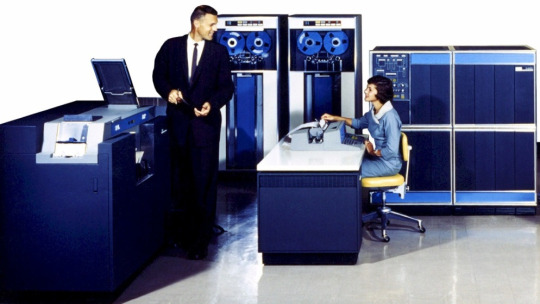

Next would be IBM 650. She's married to 705, and their kid is the 7070! (Because this one was specifically made to take over for those two and yet couldn't read what either of them could and completely flopped </3) She's a bright and cheerful worker and she also has roller skates since the computer itself is on wheels.

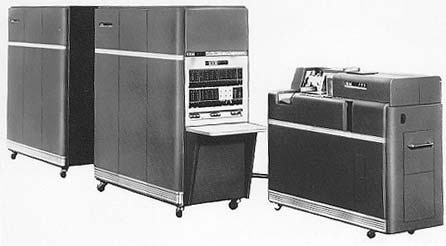
Next is IBM System 360. The absolute top of the game, she's basically the leader of all things IBM mainframes up to the 70's. Iconic, flashy, and a powerhouse of compatibility, she can do more than most of the others can and she knows it. She's strict but in that way that's necessary to keep everything running smoothly. Everything would just about fall apart without her, and she and Univac 1 are forever locked in a rivalry.
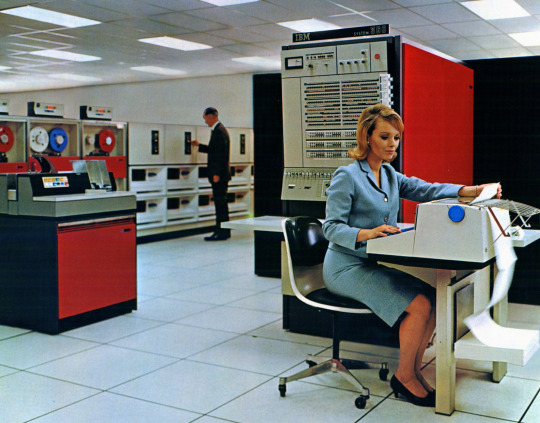
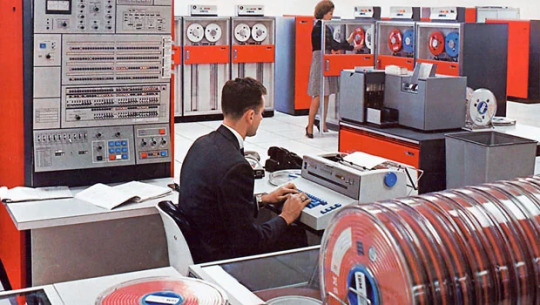
In addition to this, her successor System 370 is actually much more mellow and laid back. She does things a lot quieter, but with more efficiency. She finds 360's manic anger almost endearing and the two have coffee together often.
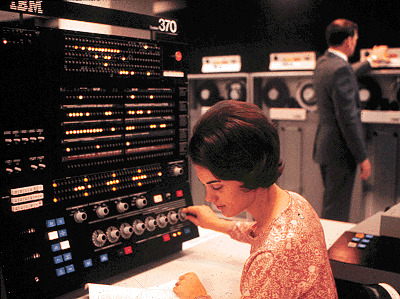
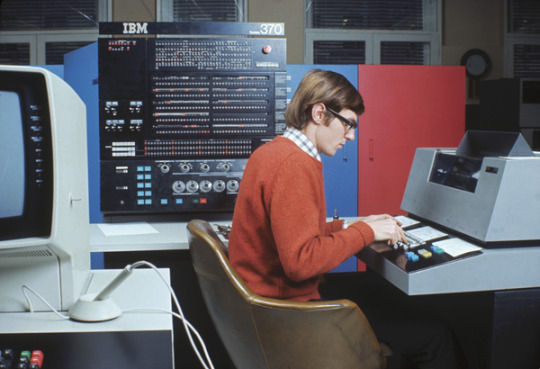
Now for IBM 1620 or CADET! Honestly need to research more into this one but she's very fun.
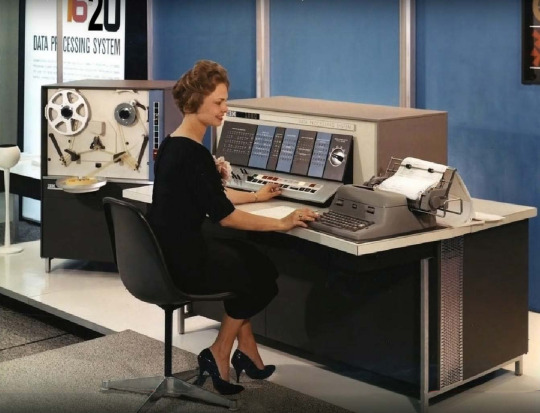
Now Maddida is a little wild, she's very much all over the place and curious about everything. I always saw her design with messy hair, a silver hat, and a flower hairband because of the pieces of the computer.
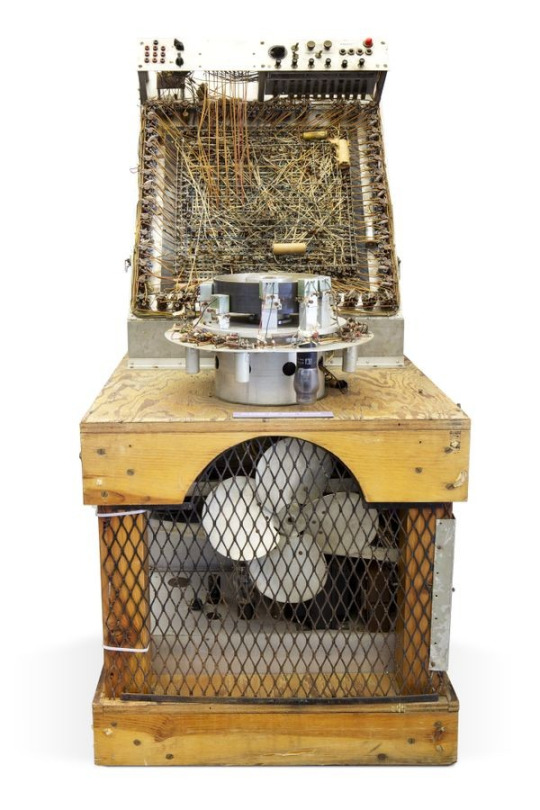
Now for a kind of famous one again, the Illiac! Illiac was the first computer to actually write music! Her twin is Ordvac and the music she made can be found below, played by an orchestra!
youtube
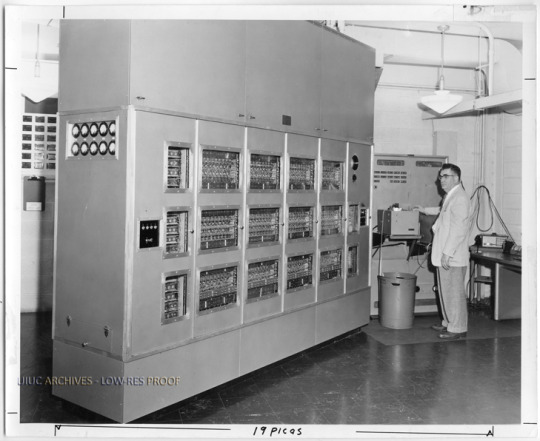
That's all I've decided for now but there will be more later!
11 notes
·
View notes
